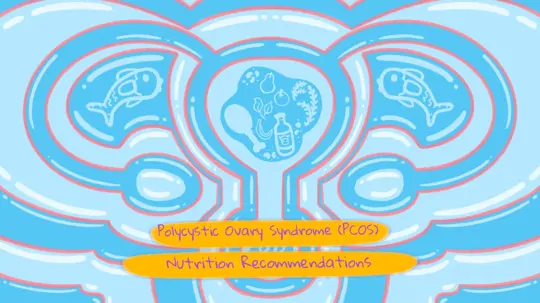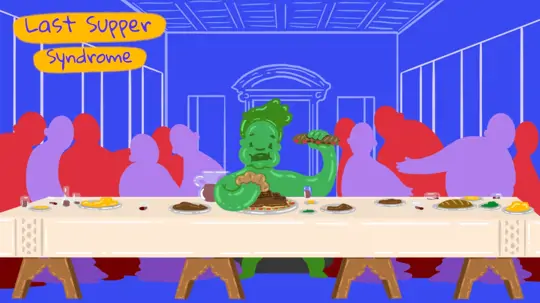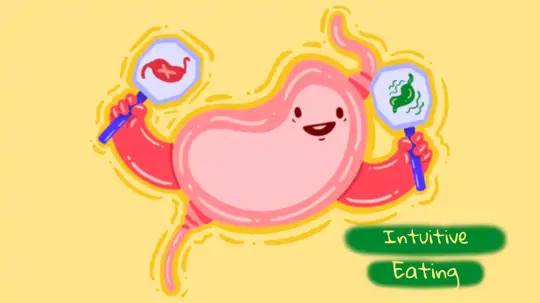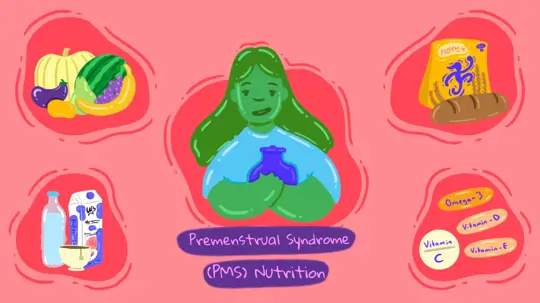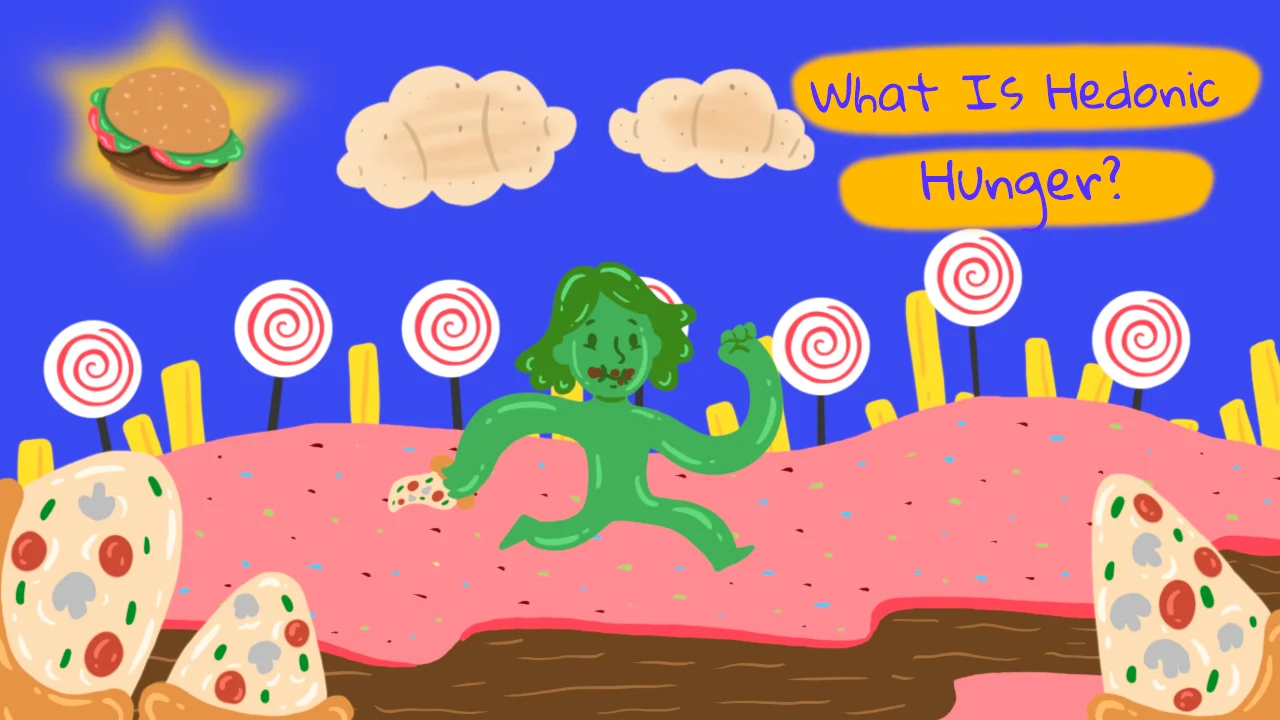
Start feeling better today!
Connect with your therapist today and take control of your life like our 850.000 happy clients.
Get StartedWhat Is Physiological Hunger?
The term hunger is used to describe the body’s biological response to an acute energy deficit and is a natural state that arises when a person hasn’t eaten for a long time.
Although it varies from person to person, hunger brings about some physical symptoms. Our stomach may growl, and we may feel a strong sense of emptiness or hollowness in our stomach. If hunger intensifies, we may even feel faint. It can make us irritable and impatient. It becomes hard to concentrate or tolerate other things.
This type of hunger, which comes with such symptoms, is called physiological hunger. Let’s say you’ve eaten your meal, and all these symptoms have gone away. Your stomach is full, your blood sugar is rising, and you feel relaxed and satiated. Yet, somehow, the thought of having dessert starts to creep into your mind. You suddenly feel a strong urge to eat something sweet. But how? There was no room for another bite. You were full to the brim and even struggled to finish your plate!
This is exactly the moment we can say that hunger has other dimensions too. Apart from physiological hunger, which arises from a basic need, there are two other types of hunger. One of them is hedonic hunger.
Hedonic Hunger: Constantly Feeling Hungry
Hedonic hunger is the desire to eat triggered by the taste, smell, or appeal of food rather than an actual need. It is the experience of seeking food purely for pleasure. This type of hunger is closely linked to gratification. Foods that are high in fat, sugar, salt, or simple carbohydrates are usually desired.
Hyper-palatable foods—another term for hedonic foods—refer to meals that are exceptionally tasty and appealing. These foods contain far higher levels of salt, fat, carbohydrates, and sugar compared to others. They strongly stimulate the brain’s reward system and drive us to consume more. We encounter such foods in our daily lives all the time: salty chips or crackers, various chocolate bars, cookies, cakes, fast-food items, candies, and many snacks we see in the market’s snack aisle.
These foods contain ingredients that cause fireworks in our brain. Their packaging is also designed to grab our attention. Now imagine going grocery shopping on an empty stomach—avoiding these traps becomes even harder.
How to Identify Hedonic Hunger?
Physiological hunger develops gradually. Hedonic hunger, however, can arise suddenly. Physiological hunger can be eased with any type of food. For example, if we think, “I’ll feel better if I eat a banana,” we are probably experiencing physiological hunger. There’s no need for a specific food—any food can help satisfy it.
Hedonic hunger, on the other hand, involves cravings for specific foods—salty or sweet ones, for example. Relief doesn’t come until we eat that particular food. The urge is focused and intense. In physiological hunger, we can usually wait a bit to eat, even if it’s difficult. But with hedonic hunger, we feel like we must eat that food *right now*—there’s a sense of urgency.

Also, when experiencing physiological hunger, we don’t feel guilty, regretful, or upset after eating. But after eating due to hedonic hunger, we often feel guilty and remorseful. Physiological hunger ends after consuming a reasonable amount of food. Hedonic hunger, however, has no clear stopping point.
Understanding these core differences can help us identify what kind of hunger we are experiencing. If you're unsure about your hunger type, you can ask yourself:
“When and what did I last eat?”
If it’s been 5–6 hours or more since your last meal—or if your last meal was low in nutrients—chances are you're experiencing physiological hunger. Foods like watery fruits and vegetables alone won’t keep us full for long. A meal that includes quality protein (fish, red meat, chickpeas, lentils, etc.), complex carbohydrates (whole grain bread, whole wheat pasta, bulgur), and healthy fats (avocado, olive oil, nuts) will keep us full for longer.
It’s crucial to pay attention to both the content and timing of meals to track hunger properly. If you find yourself wanting to eat again right after a meal or very shortly afterward, that’s likely a sign of hedonic hunger.
“Would any food satisfy me right now?”
If you're fantasizing about foods that aren’t readily available to you, it's likely you’re experiencing hedonic hunger. That’s because physiological hunger can be satisfied with any accessible food. There's no specific craving. But since hedonic hunger is linked to pleasure, your brain seeks out foods that offer the greatest gratification—like a particular pastry from a bakery, your mom’s cookies, or a specific brand of hazelnut chocolate.
Why Do We Feel Hungry When We’re Full?
The hedonic reward system is what allows us to still crave dessert even after a big festive meal. Some people can stop eating after a few bites and move on. Others find it hard to let go of the sugar or salt-induced joy and keep reaching for more. Researchers think the difference lies in a mix of our genes, environment, and the strength of our inhibitory responses—our brain’s “brakes” that help us resist impulsive behaviors like overeating.
It’s true that some people have exaggerated responses to certain foods compared to others. Some react very strongly, while others hardly react at all.
Binge Eating Disorder and Hedonic Hunger
Hedonic hunger isn’t limited to people with binge eating disorders—it can affect everyone. In fact, hedonic eating can become a daily struggle for many. We are constantly surrounded by food options we don’t need. Gradually, we start consuming more calories than necessary, leading to weight gain.
As we gravitate more toward fatty, salty, sugary, or carb-heavy foods that stimulate dopamine activity in the brain, we start eating fewer nutritious foods that don’t trigger the same dopamine response. This leads to imbalanced nutrition, which can cause obesity and fat-related health issues. Among children especially, a cycle of sugar and dessert cravings can begin—causing them to reject healthy foods altogether.
Smart Grocery Shopping and Nutrition Label Reading Habits
Many products on the shelves today have more salt or sugar than we think—even those marketed as healthy options often contain added sugar. Unfortunately, this is allowed under current regulations. So what can we do? How can we stay more in control?

Developing a habit of reading food labels can help us navigate this. You might be getting a significant portion of your daily calories from sugar or refined carbs without realizing it. Granola or cereal bars that seem like a great choice may not be as innocent as they look. Even granola and muesli, often used as a quick and healthy breakfast, can be loaded with sugar.
Thinking about grabbing a fruit yogurt or fruit kefir as a healthy snack? Make sure to check the nutrition label. Starting your day with these items or eating them during snack times can negatively impact your blood sugar and make you crave more food. As your dopamine levels adjust, you may need to consume more sugar to feel the same pleasure—leading to increased sugar intake without you noticing.
Exercise and Appetite Control
There are other ways to curb a strong appetite. Regular exercise improves insulin sensitivity, which leads to more stable blood sugar levels. This means fewer cravings caused by blood sugar crashes.
Losing weight through exercise alone is actually tough. A long treadmill session might only burn off a few cookies. But new research shows that exercise may make it easier to lose weight in an unexpected way—it helps the body tune into true hunger signals and reduces the likelihood of giving in to hedonic urges. Regular physical activity can definitely help reduce the chance of overeating.
This is especially true if you spend most of your day sitting. A sedentary lifestyle lowers your energy expenditure and can influence your appetite. That’s why it can be hard to tell if you’re really hungry or just bored or stressed—responding to hedonic cravings.
Moving throughout the day—taking walks, doing household chores, or gardening—can increase your sensitivity to real hunger cues and make you less affected by hedonic cravings. According to one study, the best type of workout for suppressing appetite may be high-intensity interval training (HIIT). Short bursts of explosive movements, like jump squats, lead to a buildup of lactate in the blood—the same substance that causes that burning feeling in your muscles.
In people with higher blood lactate levels, researchers observed lower levels of the hunger hormone ghrelin. This suggests lactate may influence its secretion, though more research is needed to confirm this effect.
Sleep and Appetite Control
Another factor affecting appetite is sleep. Daily sleep quality plays a significant role in how hungry we feel. Research shows that sleep deprivation makes people feel hungrier the next day. In one study, a group of participants was allowed only three hours of sleep. The next day, they were given a full night’s sleep. On the day following sleep deprivation, they consumed significantly more calories—including more junk food—than after getting a full night's rest.
New research shows that a sleep-deprived brain finds high-calorie foods more appealing. Practicing good sleep hygiene can help prevent overeating. Before analyzing your diet, focus on creating a good sleep environment—set a schedule, maintain an appropriate room temperature, ensure complete darkness, and avoid blue light before bed.
Final Thoughts
Rather than simply trying to stop eating, understanding the root causes and creating solutions accordingly can be much more beneficial—both physically and mentally. Instead of eating less, focusing on improving sleep quality and incorporating enjoyable and sustainable exercise into your life can yield better results. What are your biggest challenges right now? What small actions can you take today? Start with steps like buying a better pillow, avoiding blue screens before bed, or finding a walking buddy.
